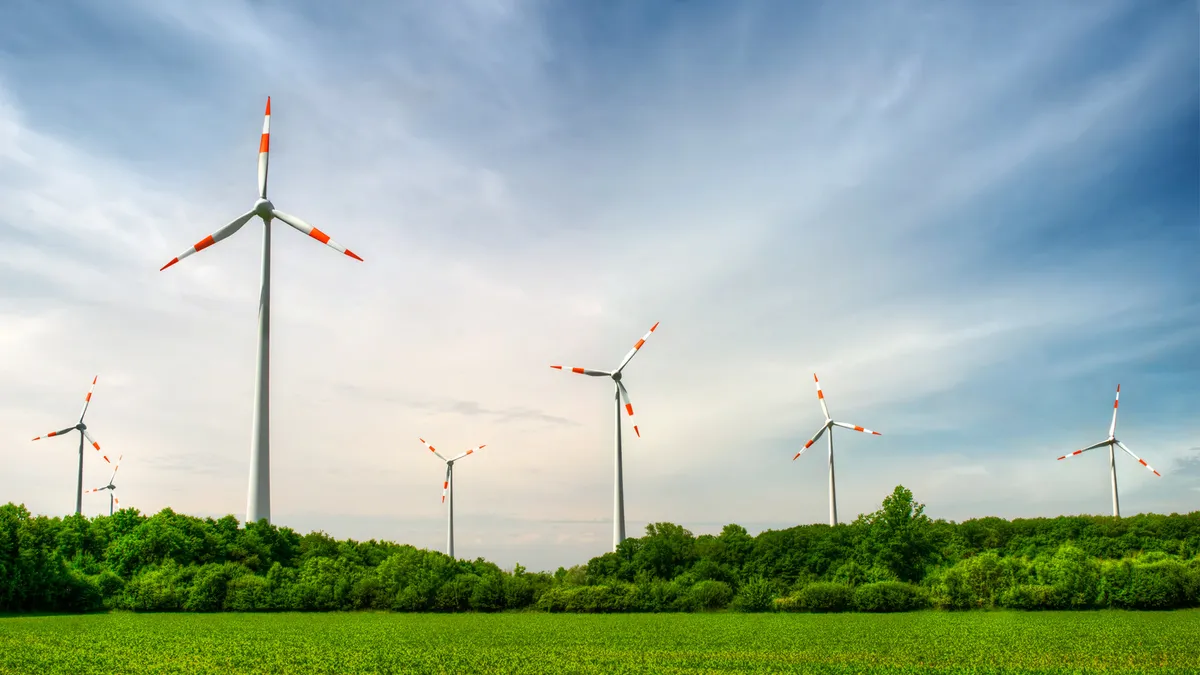Dive Brief:
- Despite the enormous recent growth in wind power in the U.S., the lack of investment into new transmission lines, among other challenges, will make it more difficult for onshore wind to compete against solar power as the dominant source of clean energy, according to a new analysis from Wood Mackenzie.
- "National and pan-regional super grid projects," where one governing entity plans and builds new transmission capacity, may be the answer to overcome the coordination problems among grid operators, utilities and state regulators that currently block new transmission infrastructure, according to a statement from Wood Mackenzie on Wednesday that draws from the research firm’s 2020 outlook insight for global wind.
- Another challenge for wind going forward is the fact that the "low-hanging fruit" of cost reductions, such as technological innovations that have made wind turbines more efficient, have already been picked, Wood Mackenzie Head of Global Wind Research Dan Shreve said in the statement.
Dive Insight:
Many of the cheapest, most efficient places to build new wind turbines are those isolated from population centers, necessitating large transmission investments in order to connect the wind farms to electricity demand. But what is changing, according to Shreve, is that the "top tier" wind resources yet to be developed are particularly difficult to reach with transmission infrastructure, often due to political opposition.
"A spate of high profile transmission projects," such as the Multi-Value Projects in the region of Midwest grid operator MISO, "over the last decade helped reduce congestion within high wind penetration zones, as was evidenced by a reduction in the frequency of curtailment," Shreve said in an email to Utility Dive.
"However, efforts to build out new long haul transmission have been stymied as of late by local opposition groups while the costs of even small scale transmission upgrades has ballooned in wind rich regions," he said.
Just five states — Texas, Iowa, Oklahoma, Kansas and Illinois — account for 70% of new wind installations over the last five years, according to Shreve, because that is where the best wind resources are, leading to low costs. But when those resources cannot be tapped to meet state or utility emissions reduction goals, potentially cheap wind energy is being left on the table.
"Top tier wind resources are critical to reaching the low power prices demanded by the market. These tend to be more localised than solar resources and situated in more remote locations," Wood Mackenzie’s statement said, adding that "a lack of bulk transmission investment to support the expansion of wind power" is one of the "primary barriers" to decarbonizing the U.S. grid.
Curtailment occurs when there is more energy being produced than the market requires. Due to the transmission difficulties, many new wind farms are being built "in parts of the grid that are already saturated" but the owners of those projects simply have to accept curtailment, Grid Strategies Vice President Michael Goggin told Utility Dive.
While solar energy also faces constraints on where it can be built, siting is "a slightly larger impediment for wind than for solar," according to Goggin, because if one location does not work out, it is relatively easy to find other locations where sun ray exposure is as strong, but locations with high wind resources are more limited. Even in regions with "strong low-cost wind resources," there is a "low success rate" for proposed wind projects that enter the queue of projects hoping to interconnect to the grid, he said.
Over the past several years, wind energy has reduced costs significantly through technological improvements, like taller and more efficient turbine blades. But Wood Mackenzie expects future cost reductions to be "marginal." More technological progress is expected for offshore wind compared to onshore, the statement said.
"Key evolutionary changes in turbine tower design, blade materials and controls will cause further reductions in onshore wind’s [levelized cost of electricity], however none can be considered true game changers," it said.













